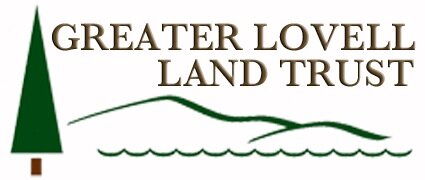2017... THE YEAR OF THE LICHEN
Leigh MacMillan Hayes, GLLT Education Director
FROM THE 2017 EDITION OF LAND, LAKES & US MAGAZINE
The GLLT has declared 2017 to be the “year of the lichen.” In recognition of these surprising organisms, we’ve added key information along the self-guided walk at Perky’s Path in the Heald and Bradley Ponds Reserve so you can look for examples as you hike that trail.
Lichens are interesting organisms that play an important role in nature and are useful to humans. We can look to lichens as biological sensors because they can tell us things about the environment in which they live. For example, some tolerate air pollutants such as nitrogen and sulphur compounds while others are sensitive to the presence of these compounds.
Historically, people have used lichens for dyes, decorations and medicinal purposes. Due to their antibiotic properties, some are commercially valuable in ointments and products that are used to aid healing of superficial wounds.
For what seemed like ever, it was thought that lichens were symbiotic life forms consisting of a fungi (mycobiont) and an alga (photobiont) that took a likin’ to each other and formed a single organism. Sometimes, cyanobacteria or blue-green algae was tossed into the mix. The fungi provide shelter (algae can only live where they won’t dry out and so being surrounded by fungal cells enabled algae to live out of water), while the photosynthetic partners, algae or cyanobacteria, produce food by manufacturing sugar from the sun and carbon dioxide. Cyanobacteria can also make amino acids directly from the nitrogen gas in the atmosphere, something neither fungi nor algae can do. Some compare the relationship to a farmer tending his crop—the fungi being the farmer and the algae the crop.
After 400 years of trying to create lichens in laboratories, new scientific research was published in July 2016 that identified a third partner in the mix—yeast—which plays an unknown part in what is now understood to be a three-part symbiotic system.
Have you ever noticed that lichens change color when they get wet? These organisms have a high resistance to damage by dehydration and they will suspend photosynthesis when they dry out. The cool thing about them is that they can quickly absorb water and get back to producing food as soon as they get wet.
Recognizing the substrate on which they’re growing is helpful in identifying the lichens. There are three substrates: rock, tree and soil. Another useful characteristic for identification is the growth form. Generally, there are four growth forms, but three are most obvious and do not require a microscope: crustose, foliose and fruticose. Squamulous, or tiny, scale-like lobes is the fourth form.
Crustose lichens look crust-like and strongly adhere to their substrate. Found on rocks and bark, they appear to have been painted in place. (crustose=crust)
The foliose form accounts for most of the lichens that we observe in Maine. They are more or less leafy in structure and have a distinct upper and lower surface or cortex. Often, the foliose lichens are loosely attached to their substrate. One that we can see even at 50 miles an hour on Route 5 is common greenshield lichen, the large yellow-green leafy circle that decorates many of our trees. (foliose=foliage)
Fruticose is the third form. This type of lichen has a branching structure and stalks called podetia that are either erect, pendant or shrubby and attached to the substrate only at the base. It’s often rounded and hollow, though there are always exceptions. There is no distinguishable difference between the upper and lower surfaces and the branches are like the growth form of a bunch of grapes. (fruticose=fruit)
Some lichens grow at an especially slow rate—think hundreds of years, rather than decades. That in itself should stop us in our tracks. Yet, even as we stand right next to the ones that surround us on rocks, logs, trees and the forest floor, we hardly take notice of them.
Join us this summer to take a closer look and help us celebrate 2017 as the year of the lichen.
Friday, July 12, 7:30PM
Charlotte Hobbs Library in Lovell—Maine Master Naturalist Jeff Pengel will help us recognize the forms and characteristics of lichens in his “Lookin’ at Lichens” program.
Saturday, July 13, 9:30AM
We’ll go lookin’ at the John A. Segur Wildlife Refuge, New Road. Hand lenses will get us up close to the lichen world.
By: Leigh MacMillen Hayes, GLLT Education Director





